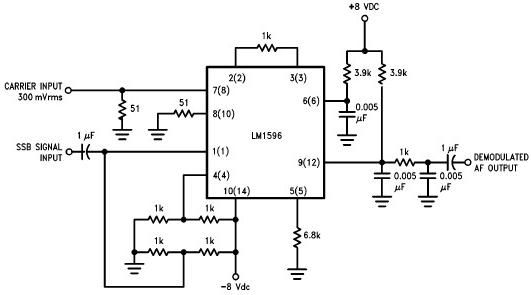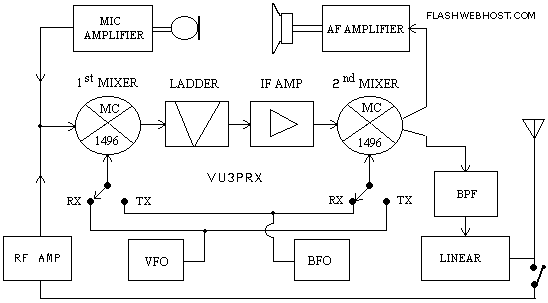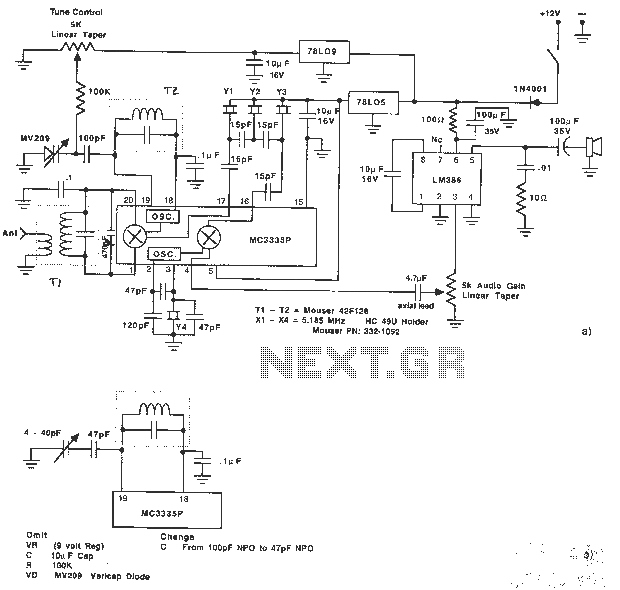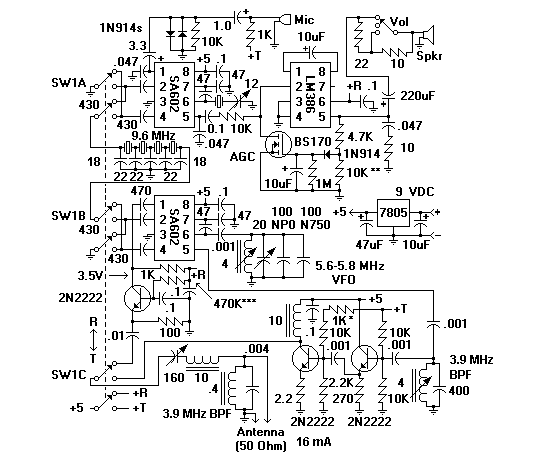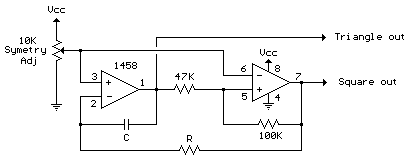
Ssb Generators
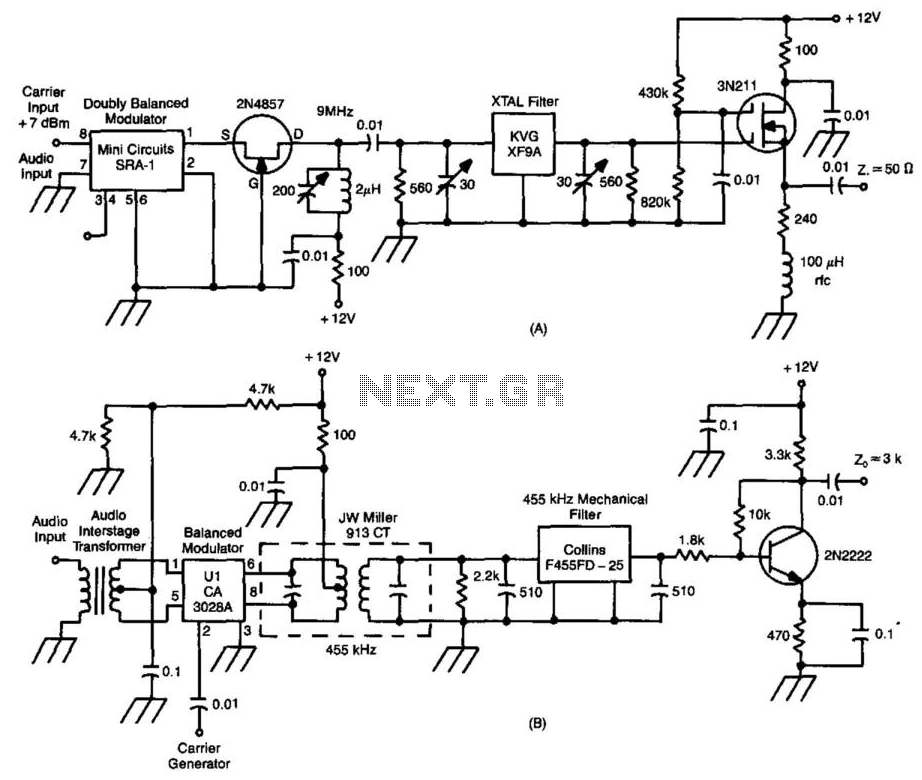
These two circuits are SSB generators. One utilizes a crystal filter by KVG Electronics operating at 9 MHz, while the other employs a 455 kHz mechanical filter. By feeding the outputs into a mixer, the frequency of the SSB generator can be converted to other frequencies. It is important to maintain low signal levels to prevent distortion.
The described SSB (Single Sideband) generators are designed for efficient frequency modulation and demodulation in communication systems. The first circuit incorporates a crystal filter, specifically designed by KVG Electronics, which operates at a frequency of 9 MHz. This crystal filter is crucial for selecting the desired sideband while suppressing unwanted signals and noise, thus enhancing the overall signal quality.
The second circuit employs a 455 kHz mechanical filter, which is known for its narrow bandwidth and high selectivity. This filter allows for precise tuning and is commonly used in AM radio applications. Both filters serve to improve the performance of the SSB generators by ensuring that only the intended frequency components are processed, thereby minimizing interference from adjacent channels.
The outputs of these two circuits are fed into a mixer. The purpose of the mixer is to combine the output signals from the SSB generators, allowing for the conversion of the generated SSB signal to different frequencies. This frequency conversion is essential for adapting the SSB signal for transmission or further processing in various communication applications.
It is critical to maintain low signal levels during this process to avoid distortion, which can degrade the quality of the transmitted signal. Proper impedance matching and careful control of signal amplitudes are necessary to ensure that the output remains within acceptable limits, thus preserving the integrity of the SSB signal throughout the system. Overall, these circuits exemplify the integration of advanced filtering techniques and mixing processes to achieve high-quality signal generation for modern communication systems. These two circuits are SSB generators. One uses a crystal filter by KVG Electronics at 9 MHz, the other uses a 455-kHz mecha nical filter. By feeding the outputs into a mixer, the frequency of the SSB generator can be converted to other frequencies. Keep signal levels low enough so that distortion does not occur.
The described SSB (Single Sideband) generators are designed for efficient frequency modulation and demodulation in communication systems. The first circuit incorporates a crystal filter, specifically designed by KVG Electronics, which operates at a frequency of 9 MHz. This crystal filter is crucial for selecting the desired sideband while suppressing unwanted signals and noise, thus enhancing the overall signal quality.
The second circuit employs a 455 kHz mechanical filter, which is known for its narrow bandwidth and high selectivity. This filter allows for precise tuning and is commonly used in AM radio applications. Both filters serve to improve the performance of the SSB generators by ensuring that only the intended frequency components are processed, thereby minimizing interference from adjacent channels.
The outputs of these two circuits are fed into a mixer. The purpose of the mixer is to combine the output signals from the SSB generators, allowing for the conversion of the generated SSB signal to different frequencies. This frequency conversion is essential for adapting the SSB signal for transmission or further processing in various communication applications.
It is critical to maintain low signal levels during this process to avoid distortion, which can degrade the quality of the transmitted signal. Proper impedance matching and careful control of signal amplitudes are necessary to ensure that the output remains within acceptable limits, thus preserving the integrity of the SSB signal throughout the system. Overall, these circuits exemplify the integration of advanced filtering techniques and mixing processes to achieve high-quality signal generation for modern communication systems. These two circuits are SSB generators. One uses a crystal filter by KVG Electronics at 9 MHz, the other uses a 455-kHz mecha nical filter. By feeding the outputs into a mixer, the frequency of the SSB generator can be converted to other frequencies. Keep signal levels low enough so that distortion does not occur.
